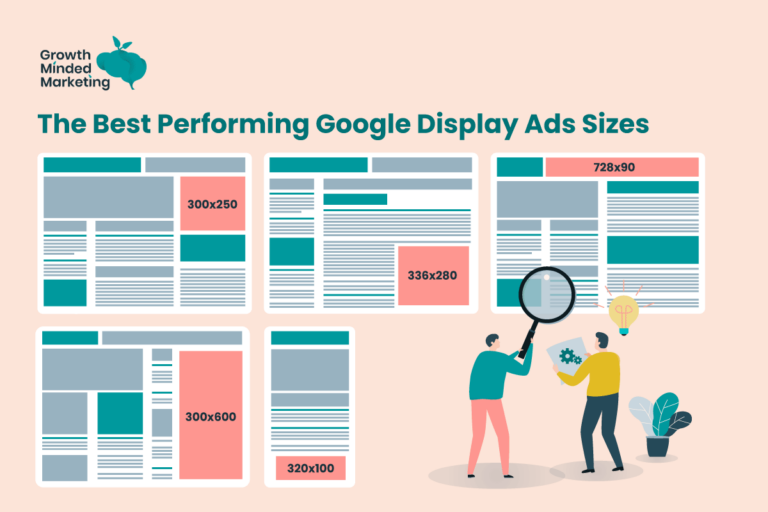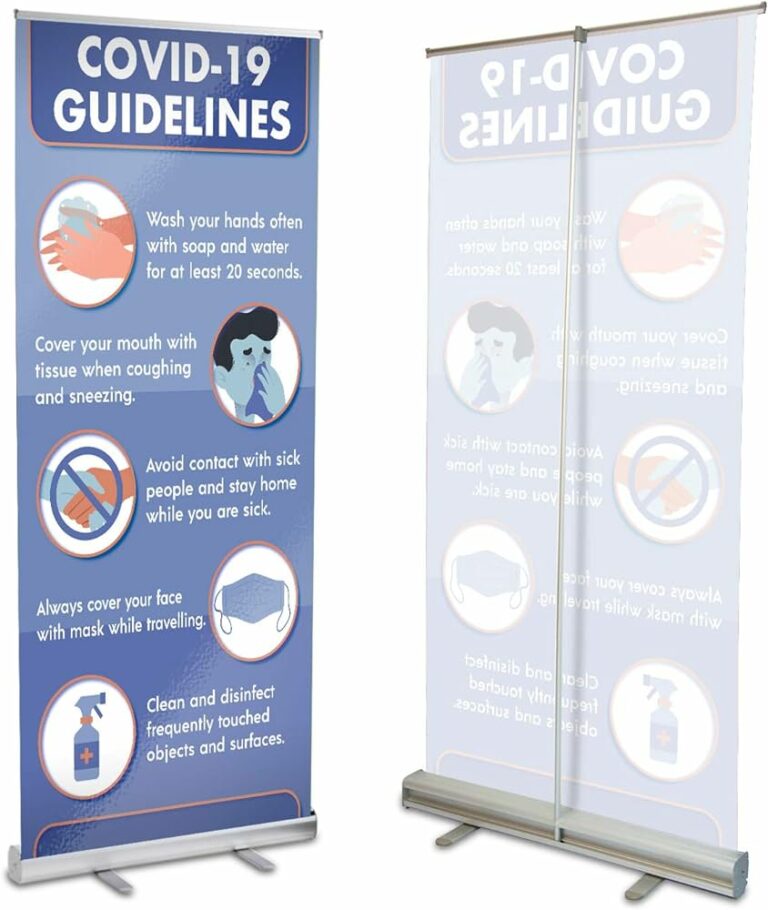Pros and Cons of Various Banner Formats
So, you’ve come across the exciting world of banner formats, huh? Well, get ready to dive into the pros and cons of various options that will surely make you question the very essence of digital advertising.
From static banner ads that stay still like a statue, to animated GIF banners that bring a touch of movement, and HTML5 banners that offer interactive elements, there’s no shortage of choices.
But wait, we’re just getting started! There are also video banners that can captivate your audience with moving visuals, and native banners that seamlessly blend into the website’s content.
With so many options at your disposal, it’s time to explore the pros and cons of each format and find the perfect fit for your advertising needs.
Static Banner Ads
Static banner ads are a commonly used form of online advertising that display a fixed image or graphic. These types of ads are popular because they’re easy to create and can be placed on a wide range of websites. When you see a static banner ad, it doesn’t move or change like other types of ads. Instead, it remains static and provides a simple message or call to action.
One of the advantages of static banner ads is that they load quickly, which means that users don’t have to wait for the ad to load before viewing the website content. This can be particularly beneficial for mobile users who may have slower internet connections. Another advantage of static banner ads is that they’re less intrusive compared to other forms of online advertising. Since they don’t have any animations or videos, they’re less likely to distract or annoy users.

However, one drawback of static banner ads is that they may not be as attention-grabbing as other types of ads. Without any movement or interactive elements, static banner ads may not be able to capture the user’s attention as effectively.
Animated GIF Banners
When it comes to online advertising, another effective format to consider is the use of animated GIF banners. These banners are essentially a series of images displayed in a loop, creating a short animation that catches the viewer’s attention.
Here are three reasons why animated GIF banners can be a great option for your advertising campaign:
1. Eye-catching: The movement in animated GIF banners is visually engaging and can help your ad stand out from the static banners on the page. This can increase the chances of capturing the viewer’s attention and driving them to click on the ad.
2. Storytelling: Animated GIF banners allow you to tell a story or convey a message in a short amount of time. By strategically planning the sequence of images, you can create a narrative that effectively communicates your brand or product’s key selling points.
3. Versatility: Animated GIF banners can be used in various online advertising spaces, including websites, social media platforms, and email newsletters. They’re compatible with most browsers and devices, making them a versatile choice for reaching a wide audience.
HTML5 Banners
HTML5 Banners offer a dynamic and interactive advertising format that can enhance user engagement and drive conversions. With HTML5, you have the ability to create visually stunning and engaging banners that capture the attention of your target audience. Unlike traditional static banners, HTML5 banners allow for animated elements, videos, and interactive features, making them more engaging and memorable.
One of the main advantages of HTML5 banners is their compatibility with various devices and platforms. Whether your audience is viewing your banner on a desktop, tablet, or mobile device, HTML5 ensures a seamless experience across all devices. This versatility is crucial in today’s mobile-first world, where users are constantly switching between devices.
Another benefit of HTML5 banners is their ability to track user interactions and gather valuable data. By incorporating tracking codes and analytics tools, you can gain insights into user behavior, such as clicks, conversions, and time spent on the banner. This data can help you optimize your advertising strategy and improve the effectiveness of your campaigns.
However, it’s important to note that HTML5 banners may require more development resources and technical expertise compared to other banner formats. Creating a visually appealing and interactive HTML5 banner may require the skills of a web designer or developer. Additionally, the file size of HTML5 banners can be larger compared to other formats, which may affect loading times and user experience.
Video Banners
Are you looking for a more engaging and interactive advertising format for your banners? Video banners might be the solution you’re searching for. These dynamic and attention-grabbing banners have become increasingly popular in the digital advertising world.
Here are three reasons why video banners are worth considering:
1. Increased Engagement: Video banners allow you to capture your audience’s attention with moving visuals and compelling storytelling. The combination of sight, sound, and motion creates a more immersive experience that can effectively convey your brand message.
2. Better Brand Recall: Studies have shown that video content has a higher retention rate compared to static images or text. By incorporating video into your banners, you increase the likelihood of your brand being remembered by viewers.
3. Enhanced Click-through Rates: Video banners have the potential to significantly boost click-through rates. People are more likely to click on a banner that catches their eye and offers an engaging video experience. This can lead to increased traffic and conversions on your website.
Video banners provide a compelling way to connect with your target audience and drive engagement. Consider incorporating this format into your advertising strategy to stand out from the crowd and make a lasting impression.
Native Banners
Native banners seamlessly blend into the user’s browsing experience, making them a subtle and effective advertising format. These banners are designed to match the look and feel of the website or app where they appear, ensuring they don’t disrupt the user’s flow. By blending in with the surrounding content, native banners are less intrusive and more likely to grab the user’s attention without causing annoyance.
One of the key advantages of native banners is their ability to deliver a targeted and personalized advertising experience. These banners can be customized to match the interests and preferences of individual users, increasing the chances of engagement and conversion. By presenting relevant and contextual ads, native banners enhance the user’s browsing experience rather than interrupting it.
Another benefit of native banners is their adaptability across different platforms and devices. Whether the user is browsing on a desktop, tablet, or smartphone, native banners can seamlessly adjust their format and layout to fit the screen size and resolution. This ensures a consistent and optimized visual experience across all devices, maximizing the impact of the advertisement.
However, one drawback of native banners is that they require careful design and integration to truly blend in with the surrounding content. If not done properly, these banners can appear intrusive and disrupt the user’s browsing experience. Additionally, native banners may be more challenging to implement and measure the effectiveness compared to other banner formats.
Frequently Asked Questions
How Can I Ensure That My Static Banner Ad Stands Out Among Other Banners on a Webpage?
To ensure your static banner ad stands out among other banners on a webpage, consider these tips:
– Use eye-catching colors and graphics that grab attention.
– Keep your message concise and clear to avoid overwhelming viewers.
– Strategically place your banner in a prominent position on the webpage.
– Make sure your banner is responsive and optimized for different devices.
– Conduct A/B testing to determine which design and placement options yield the best results.
Are There Any Limitations to the File Size or Dimensions of Animated GIF Banners?
When it comes to animated GIF banners, there are a few limitations to keep in mind.
File size is a crucial factor, as larger files can take longer to load, potentially annoying users. It’s best to keep the file size under 150 KB for optimal performance.
Additionally, dimensions are important to ensure the banner fits well on different devices and screen sizes. Consider using standard dimensions like 300×250 or 728×90 to maximize visibility and compatibility.
Can HTML5 Banners Be Viewed on All Devices and Browsers?
HTML5 banners can be viewed on all devices and browsers, making them a versatile choice for your advertising needs. They’re compatible with both desktop and mobile devices, ensuring your message reaches a wide audience.
Additionally, HTML5 banners allow for interactive elements and animations, providing a more engaging user experience.
However, it’s important to consider that some older browsers may not fully support HTML5, so it’s recommended to test your banners across different platforms to ensure optimal compatibility.
What Is the Optimal Length for Video Banners to Effectively Engage Viewers?
To effectively engage viewers, the optimal length for video banners depends on various factors. It’s important to find a balance between capturing attention and not overwhelming the viewer.
Generally, shorter video banners tend to perform better as they hold the viewer’s attention and deliver the message quickly. However, longer video banners can be effective if they provide valuable and engaging content.
Experimenting with different lengths and analyzing viewer engagement metrics can help determine the optimal length for your video banners.
How Do Native Banners Seamlessly Blend With the Content of a Webpage?
To seamlessly blend native banners with webpage content, you should focus on their design and placement. Make sure the banner matches the style and format of the surrounding content.
Position it within the natural flow of the page, so it doesn’t disrupt the user’s experience. Use relevant and engaging visuals that are consistent with the overall theme.
Conclusion
In conclusion, when it comes to choosing the right banner format, it’s important to consider the pros and cons of each option.
Static banner ads are simple and effective, while animated GIF banners can grab attention with motion.
HTML5 banners offer interactivity, and video banners allow for engaging storytelling.
Native banners blend seamlessly click for more info with the content, providing a more organic experience.
Ultimately, the best format will depend on your specific goals and target audience.



